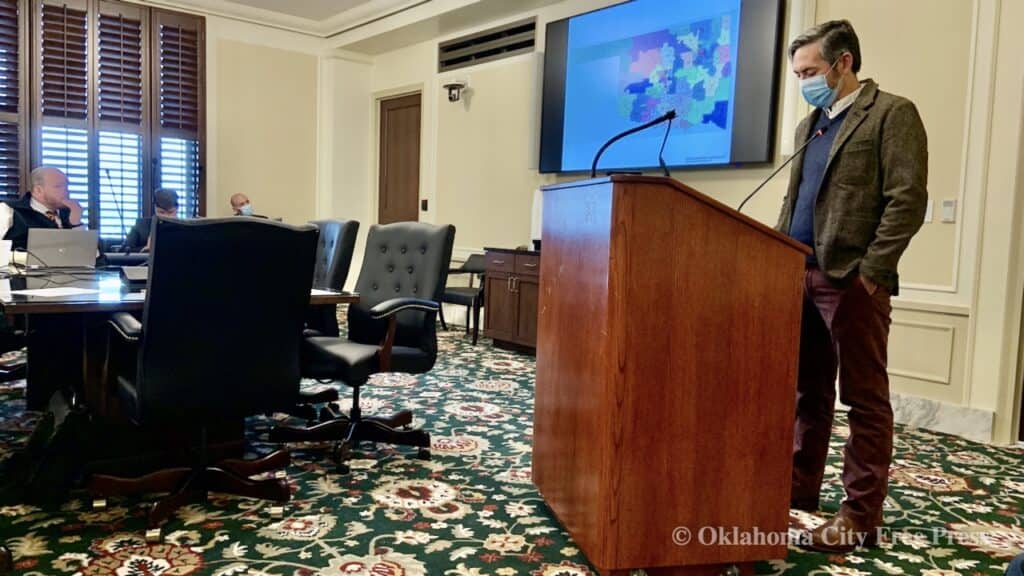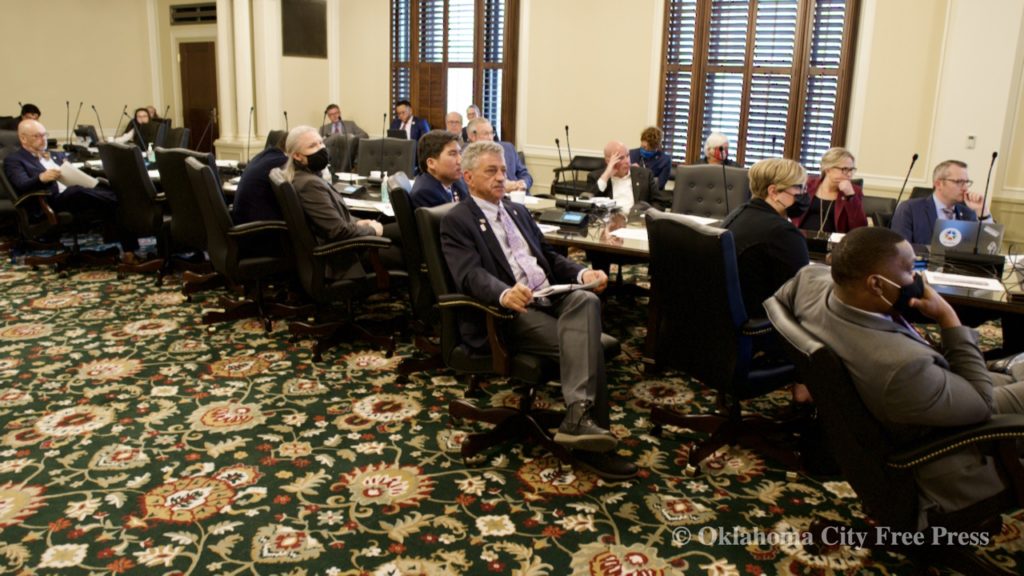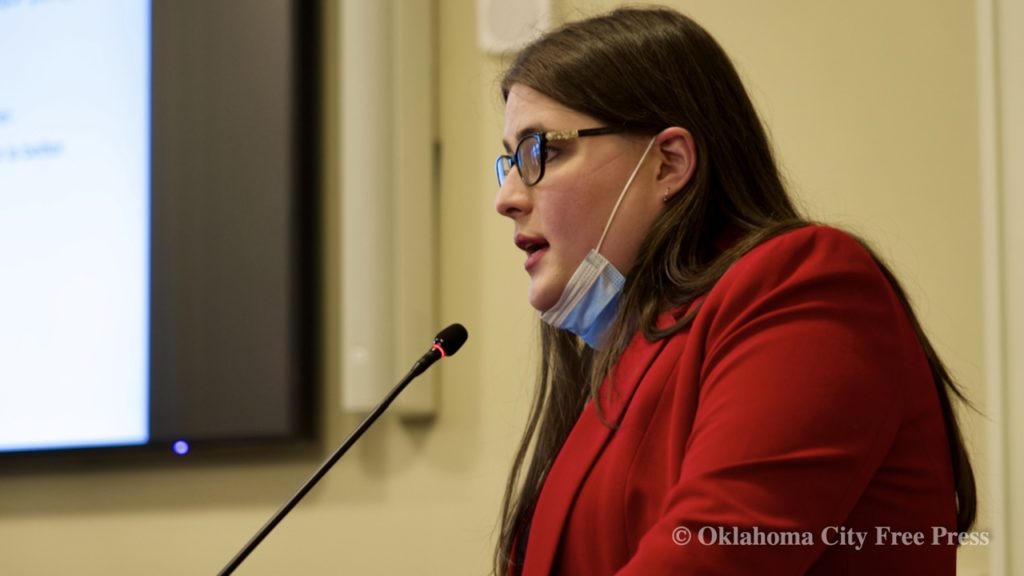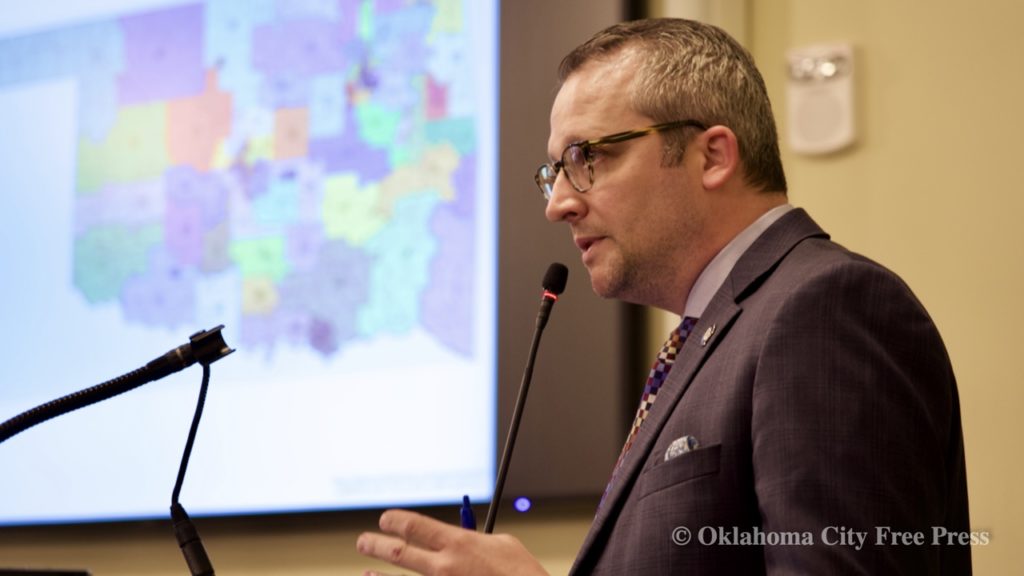Last Updated on April 16, 2021, 12:04 PM | Published: April 16, 2021
OKLAHOMA CITY (Free Press) — For the first time ever, a committee of the Oklahoma House of Representatives heard from several Oklahomans who openly participated in this year’s redistricting process in a public comment session Thursday afternoon at the State Capital.
In a livestreamed, in-person session, the House State and Federal Redistricting Committee heard from Oklahoma residents who are taking part in the process of redrawing legislative districts.
Transparency
The process is more transparent than it has ever been. In years past, legislative leaders would redraw district maps in closed-door sessions typically configuring districts to favor the majority party and particular legislators already in power.
Redistricting is the process of redrawing congressional and state legislative district lines to reflect certain changes in the state, such as population size, in a 10-year span. Oklahoma is made up of 101 House districts, 48 Senate districts and 5 congressional seats. Every 10 years, districts are drawn by the state Legislature following the completion of the U.S. Census.
The survey data used once every decade to redraw legislative districts will not be available until the end of September, due to COVID-related delays. Without this information, the House will redesign maps using population estimates in the 2015 to 2019 five-year American Community Survey.
Maps presented
The House heard from all seven Oklahomans who submitted their redistricting plans earlier this month, to consider map submissions for House districts.
Austin Buchanan, Assistant Professor of Industrial Engineering and Management at Oklahoma State University, was the first to present his version of the state’s district map to the House.
The details in Buchanan’s map includes:
- Grouping counties into clusters.
- The population would be within the 38 to 39 thousand window requirement.
- Take each county cluster and split it into the appropriate number of districts.
- Splitting Oklahoma County into 20 districts.
- Prioritized preserving counties and maintaining district compactness.
Buchanan said his plan is more of an “initial rough sketch” and he admitted that he did not fully consider communities of interest in his plan.
“I think some of the other maps that were submitted did a really good job with keeping communities of interest intact, which wasn’t something that I was really prioritizing when I created the map,” said Buchanan “So I think it makes a lot of sense if there were to be sort of a hybrid plan between what I had submitted and what others submitted to try to get the best of both worlds.”
In the redistricting process, Oklahoma seeks to preserve long-standing communities of interest based on social, cultural, ethnic, and economic similarities.
Andy Moore, (feature photo) is the Executive Director of People Not Politicians, a nonprofit organization that originally worked to create an independent redistricting commission in an effort to draw fair and impartial districts from the 2020 Census.
In Moore’s plan, he considered:
- Maximizing compactness while reducing the number of splits between counties.
- Minority representation.
- Preserving communities of interest.
- Maintaining population concentration.
Moore said the hardest part of the redistricting process was trying to consider all Oklahoman’s in his House district map.
“Aside from the delay in the census, which is unique to this year, the process of drawing the city districts is really difficult because you’re trying to please so many people — in some cases, legislators — more importantly, the general public,” Moore said in an interview with the Free Press following the session.
Alexandra Penner presented another version for the House district, which would:
- Prioritize communities of interest first.
- Create minority opportunity districts.
- Create a balance between urban, suburban and rural districts.
- Preserve municipalities and follow natural boundaries.
- Maintain compactness
Julie Sanders is the Director of Transportation for 16 counties in southwestern Oklahoma. In her map, Sanders prioritized:
- Concerns expressed from the public to refrain from splitting municipalities.
- Preserve communities of interest.
- Where incumbents lived in southwestern Oklahoma.
- Compactness and population size.
- Rural representation.
“I think this was a great opportunity to have the community involved,” Sander said.
Owen Underwood submitted his redistricting plan to the House, which would:
- Keep communities of interest intact.
- Attempt to keep district lines on main roads, rather than main streets.
- Keep small municipalities in the same district.
- Preserve proportionality.
The next presenter, Dan Williams, shared his district map plan via social media to receive public feedback during the process.
Williams’ plan seeks to:
- Preserve every single minority opportunity district.
- Preserve compactness and competitiveness.
- Consider public feedback
- Maintain current district boundaries whenever possible.
“None of my districts are significantly moved from the area’s they currently represent,” William said.
Rep. Mark Lawson, in HD-30, was the last to present his version of the House district map in the special session.
Lawson’s map prioritizes:
- Keeping communities of interest intact.
- Avoid splitting between counties and municipalities whenever possible.
- Keeping incumbents in their respective districts.
- Preserving population deviation and proportionality.
- Minority representation.
Beginning in 2022 through 2030, the new district maps will be used to conduct state congressional and legislative elections.
OKC majority-minority districts
Representative Ajay Pittman, HD-99, D-Oklahoma City talked to Free Press after the meeting adjourned about how she thought the process was going.
Some voters in majority-minority districts in Oklahoma have been concerned that the redistricting process would break up districts that have represented particular communities of color.
We asked if she thought the process was going well for districts like her eastside OKC historically black district and the other OKC majority-black HD-97 served by Democratic Representative Jason Lowe.
“I definitely feel like 99 is safe as well as 97,” Pittman said. “And, they’ll be able to have good representation.”
Pittman said that she believed the historically black-majority districts in Tulsa were also being protected in the discussion. But, she added that there are other communities that she thought were being respected as well.
“It was good to see and have the input of other minority communities such as Native American communities, Asian American communities, and to see that our state represents multicultural families and communities all over the state, not just in these majority-minority districts,” said Pittman.
(Editor Brett Dickerson contributed the interview with Rep. Pittman in this report.)
Brianna Garcia is a freelance journalist covering local politics and culture for Free Press. She has a degree in Journalism from the University of Central Oklahoma.














